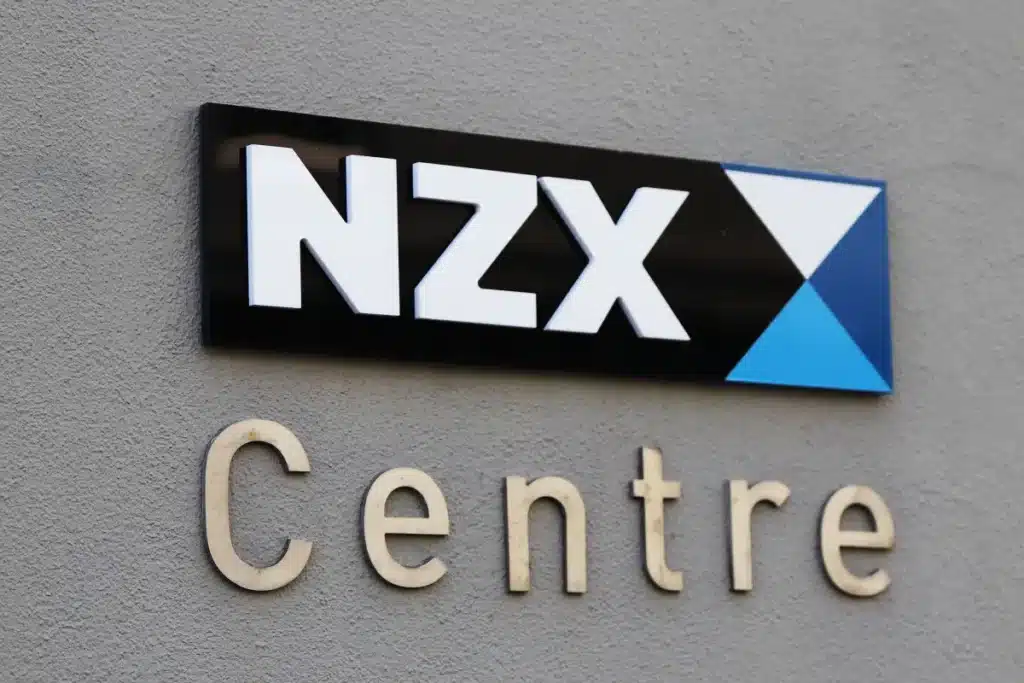What’s Moving Markets: Iran-Israel Conflict and Upcoming Fed Decision
The geopolitical tension in the Middle East has always been a significant factor influencing global markets, and the recent conflict between Iran and Israel is no exception. As of today, the conflict has entered its sixth day, creating ripples through various markets around the world, most notably oil and gold, while also impacting U.S. stock futures.
Impact on Oil Prices
The ongoing hostilities have naturally led to concerns about the potential disruptions in oil supply, causing a roller-coaster effect on oil prices. However, despite initial spikes as tensions flared, prices have recently retreated slightly. This is likely due to market participants weighing the chances of direct impacts on oil production and transportation routes against other economic factors such as global demand and inventory levels.
Stock Futures and Fed Decision
U.S. stock futures are currently pointing upwards in anticipation of the Federal Reserve’s upcoming decision. Investors are keenly watching for any announcements, particularly in light of the central bank’s recent stance on monetary policy. With inflation concerns still in the mix, the Fed’s decisions will play a crucial role in shaping market directions in the near term. Banks and financial sectors are under particular scrutiny by analysts, given their sensitivity to interest rate changes.
Gold as a Safe Haven
Meanwhile, gold prices have steadied, benefiting from the dual factors of geopolitical stress and the awaiting Fed decision. As a traditional safe-haven asset, gold often sees increased demand during times of international conflict, and with the Fed’s announcements potentially impacting the dollar, investors are opting for the perceived stability that gold offers.
Broader Market Implications
Beyond these direct market impacts, the Iran-Israel conflict and the Fed’s actions have broader implications for the global economic outlook. Businesses and investors are evaluating the potential for prolonged instability in the Middle East, which could influence everything from energy markets to transportation logistics to investor sentiment worldwide. Additionally, the Fed’s decision may signal their medium to long-term approach to handling inflation and economic growth, further affecting global trade and investment strategies.
Conclusion
In summary, the unfolding events in the Middle East and the Federal Reserve’s upcoming decision are pivotal points for global markets today. As always, investors and traders are advised to stay informed and consider these developments when making investment choices, particularly in volatile categories such as oil, gold, and currency exchanges. While the geopolitical landscape and federal policies provide challenges, they also offer potential opportunities for those attuned to market dynamics.
Today’s Top Analysis: Navigating the Current Market Climate
In today’s dynamic market landscape, understanding the forces at play can give investors a strategic edge. Analyzing current trends and insights is crucial if you’re looking to optimize your investment strategy. Let’s delve into the day’s top analysis topics and explore how they might impact your investment choices.
Stocks May Face More Pressure With Liquidity Tightening Into Quarter-End
As we approach the end of the quarter, there is a notable tightening in market liquidity. What does this mean for investors? Essentially, liquidity tightening refers to a reduction in the availability of money or credit in the financial system. It’s crucial to note that decreased liquidity can lead to increased volatility and heightened investor caution. Liquidity tightening may impact stock prices as investors reassess their risk positions and asset valuations.
This scenario can result in a challenging environment for stocks, as reduced liquidity often prompts investors to adopt a more conservative approach, potentially affecting market momentum. Keeping an eye on your portfolio and adjusting your risk management strategies can help navigate these waters.
How AI Is Pushing This Non-Technology Stock Higher
The emergence of Artificial Intelligence (AI) technology is not confined to the tech sector alone. The transformational power of AI is being felt across a diverse range of industries, sometimes in unexpected places. Recently, AI advancements have significantly boosted a particular non-technology stock, showcasing the profound impacts AI can have outside its traditional boundaries.
This development serves as a reminder of the importance of looking beyond surface trends and exploring how technological advancements can offer diversification opportunities in your investment portfolio. As AI continues to permeate various sectors, identifying companies effectively leveraging these innovations could provide lucrative investment opportunities.
Gold: Short-Term Correction Could Deepen If $3,322 Support Breaks
Gold remains a steadfast choice for many investors, often seen as a hedge against inflation and economic uncertainty. However, like any asset, it is subject to market fluctuations. Currently, gold is eyeing a critical support level at $3,322. A support level is a price point a financial instrument tends to stay above due to the concentration of demand for the asset at that price.
Should gold break below this support, a deeper short-term correction may ensue. For investors, keeping a keen focus on these technical markers can help in making timely decisions about when to enter or exit positions. Understanding market sentiment and economic indicators that drive gold prices will provide deeper insights into potential future trends.
GBP/USD Outlook: British Pound Wilts as UK Inflation, BoE and Fed Collide
Currency pairs such as GBP/USD are influenced by economic policies and global events. Recently, the British Pound is experiencing pressure due to a convergence of factors including UK inflation, and decisions by both the Bank of England (BoE) and the Federal Reserve (Fed). The interplay between these elements can significantly influence currency exchange rates.
For forex traders and international investors, staying alert to monetary policy shifts and inflation data is vital. Decisions made by central banks on interest rates can impact currency valuations, which in turn affect international trade and investments. Strategic awareness and responsiveness to these changes can benefit those looking to capitalize on currency movements.
In conclusion, today’s analysis provides vital insights into market forces, offering information that could help refine investment strategies. Whether it’s the effects of AI on traditionally non-tech sectors, the movements in precious metal prices, or currency pair dynamics, staying informed and adaptable is paramount. As always, a balanced approach tailored to individual risk tolerance and financial goals remains key to navigating the complexities of today’s market.
Understanding Today’s Top News in the Stock Market
Today marks an eventful day in the stock market as investors across the globe focus on several pressing issues. The ongoing conflict in the Middle East, particularly between Iran and Israel, is capturing headlines. Meanwhile, investors eagerly await the Federal Reserve’s decision, which is expected to impact market trajectories significantly. Here’s a deeper dive into these pressing matters and how they might influence your investment decisions.
U.S. Futures Show Positive Movement Ahead of Fed Decision
U.S. stock futures are indicating an uptick despite the tensions brewing in the Middle East. This positive movement comes as a welcome sign to investors who have been bracing for volatility due to geopolitical risks. The upcoming Federal Reserve meeting is anticipated to shed light on future interest rates and monetary policy, essentially dictating the market’s next moves. Investors are keen on the Fed’s stance, particularly after recent inflation data, which could lead to a shift in investment strategies and, consequently, market performance.
Oil Prices and the Iran-Israel Conflict
Geopolitical tensions often have a tangible impact on oil prices, and the current Israel-Iran conflict is no exception. Although oil prices have seen a small retreat, the ongoing conflict continues to loom as a key factor that could cause further fluctuations. Current projections by market analysts suggest that oil’s price movements will be strongly correlated with developments in the Middle East. Investors should remain vigilant, as any escalation could potentially lead to significant shifts in the market.
Stability in Gold Prices Amid Geopolitical Tensions
Amidst the ongoing conflict, gold prices have remained relatively stable. Typically considered a ‘safe-haven’ asset during times of uncertainty, gold’s steadiness is attributed to its perceived safety amid rising tensions and the looming Fed decision. Its current status in the market makes it an attractive option for investors seeking to mitigate risk and maintain portfolio stability. It’s a good idea to keep an eye on gold prices as these factors unfold, as any moves by the Fed could either bolster or diminish its appeal.
Meta and OpenAI: The Battle for Talent
In a different realm of the headlines, Meta (formerly Facebook) has offered significant bonuses to entice employees from OpenAI. This move highlights a growing competition within the tech industry for top-tier talent, especially in artificial intelligence, which is seen as the future of many technological advancements. For investors, such aggressive strategies underline a crucial trend: tech companies are prepared to invest heavily in talent to secure a competitive edge. The outcome of these efforts could influence Meta’s stock performance and its future innovations in AI.
Bitcoin and the Impact of Current Events
Even the emerging realm of cryptocurrencies like Bitcoin is not immune to global events. Bitcoin’s price has dipped to $105,000 amidst the Middle East conflict. External political tensions often lead to fluctuations in cryptocurrency prices, largely due to market skepticism and shifts in investor sentiment. Moreover, developments such as the progression of the US stablecoin bill add another layer of complexity to the crypto market landscape. For those invested or considering investing in cryptocurrencies, maintaining an awareness of both geopolitical and legislative changes is crucial for navigating this volatile environment.
In summary, today’s top news outlines several crucial developments affecting various facets of the market. From geopolitical tensions influencing commodity prices to the corporate exploits of tech giants and the volatility of cryptocurrencies, understanding these issues can guide savvy investment strategies. As always, staying informed of these dynamics is key to successful investing.








